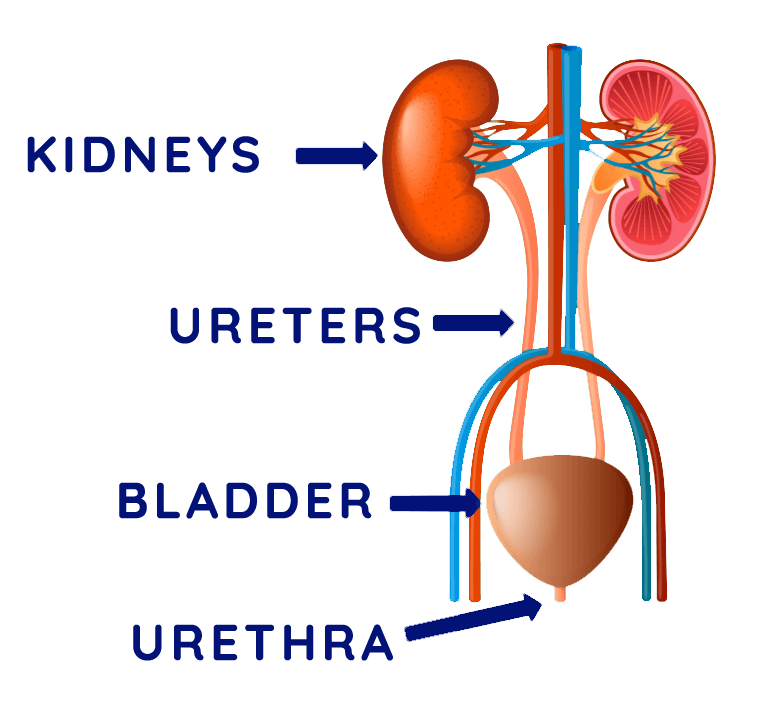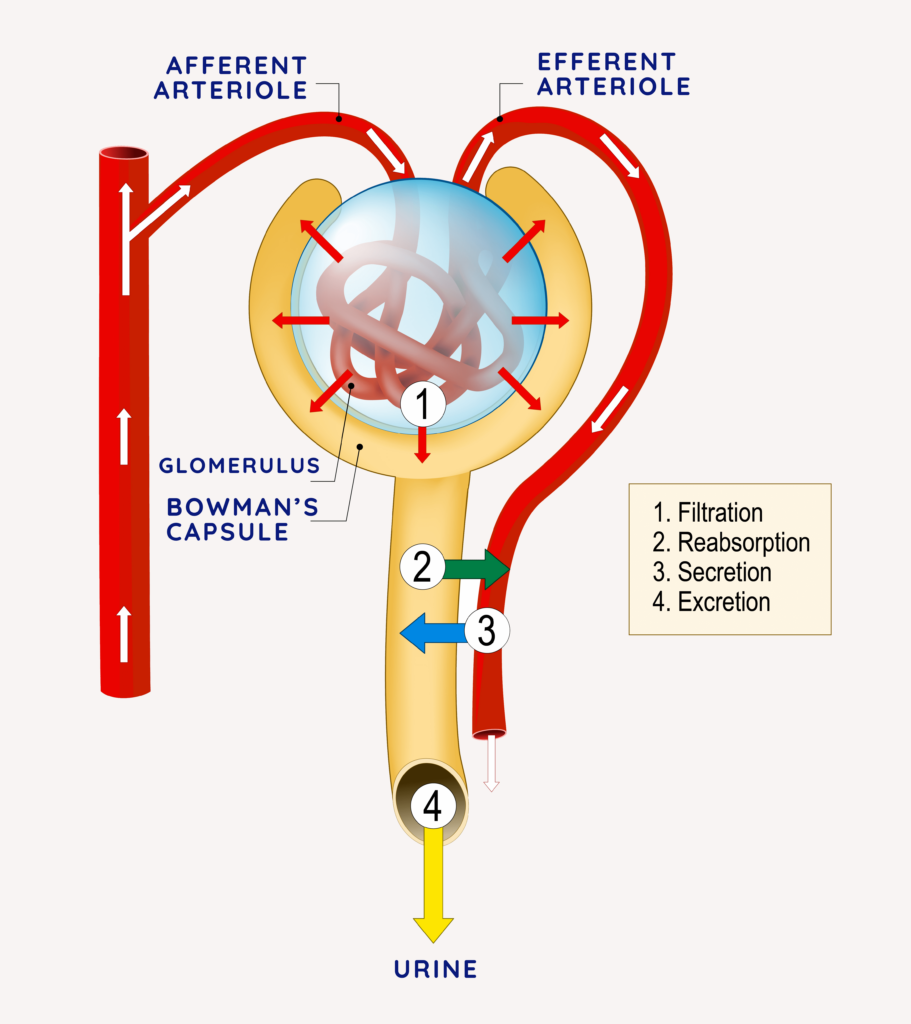The Urinary System is a system that is partially responsible for maintaining homeostasis. Before we can understand the function of the Urinary system, let’s set the foundation.
When you eat food, your digestive system breaks down the food into a usable form. Some of what’s taken in cannot be used by your body. Also, some of the byproducts of the metabolic process are waste products.
Here are some very important examples:
The Breakdown of Proteins
When you eat things like meat, eggs, and that yummy Greek yogurt, you are getting a decent amount of protein. The digestive system breaks this down into amino acids.
The body metabolizes amino acids. And the byproducts of this process are carbon dioxide (CO2), water (H2O), and ammonia (NH3). Carbon dioxide and Ammonia are waste products and shouldn’t be in the body in high amounts.
The Breakdown of Carbohydrates and Fats
When the digestive system breaks down carbs and fats, CO2 and H2O are byproducts.
What do we do with the waste products? Great question.
Most of that CO2 leaves the body via the respiratory system. Some of the CO2 gets converted into carbonic acid. Too much acid in the body isn’t good. The urinary system helps to regulate the pH.
NH3 is very toxic and cannot accumulate in the body without causing serious issues. The NH3 goes through the Urea cycle to produce urea which happens primarily in the liver.
Urea is much less toxic than NH3 and leaves the body via the urinary system.
The Functions of the Urinary System
The urinary system must perform the following functions to help with homeostasis:
- Cleaning the blood. It does this by removing toxic substances or substances that are in excess.
- Regulating pH. One of the ways it does so is by dealing with the carbonic acid we discussed above.
- Regulating Blood Pressure. If blood pressure gets too high or too low, that can have devastating consequences.
- Other functions. It doesn’t stop there. There are other functions that we’ll get into in the rest of this series.
The Structure of the Urinary System
The urinary system consists of the kidneys, ureters, bladder and urethra.
- Kidneys: These are the main organs of the urinary system. The kidney filters the blood and produces urine.
- Ureters: Once the kidney produces urine, it goes via the ureters to the bladder.
- Bladder: The bladder stores the urine until it’s time to urinate.
- Urethra: This tube allows for the urine to leave the body.
How Urine Is Formed
There are four processes involved in the formation of urine, most of which take place in the kidneys:
- Filtration: When the blood enters the kidneys, it gets filtered. The filtrate contains good and bad stuff.
- Reabsorption: The body takes the good stuff back into the blood supply because the body needs it (ions, water, etc).
- Secretion: Removal of substances from in the body into the filtrate (i.e. H+ ions)
- Elimination: Removal of urine from the body (ultimately via the urethra).





